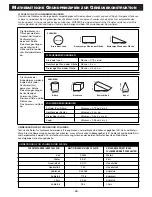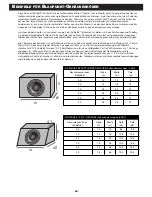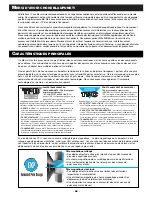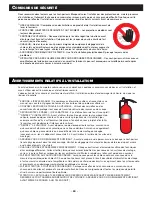
–
9
–
At some point, the subwoofer speaker must be electrically connected to an audio amplifier, be it a dedicated bass-only
amp or the amplifier built inside the radio. Clearly, the highest performance level will be from the outboard dedicated amp
due to its typically higher power (e.g., 100 watt amp vs. 20 watts from the radio). To avoid disappointing performance we
recommend power amps with rms power levels exceeding 50 watts if possible. This is NOT a minimum value; it is simply
a nice power point where you begin to really FEEL the substantial improvements in sound offered by a good
subwoofer/amplifier system.
Now that we have concluded that an outboard dedicated subwoofer amplifier is needed for optimum performance we
must somehow process the signal in order to limit the audio signals to only low frequencies. This must be done via a
“crossover” which can be “
active
” or “
passive
”. As stated earlier in this manual, the active system is preferred due to its
small size and better frequency contouring. But it must be placed in front of the amplifier and process the signals via the
RCA cables. This is rarely a problem in most installations.
The passive design is more of a “brute force” process requiring large inductors and capacitors but it is often a “cheap
and dirty” way to get bass response into the car quickly and without noise problems sometimes associated with active
crossovers. Its bigger advantage is when you wish to operate in a combination stereo high-pass/bridged subwoofer
mode common with 2 channel amps. Such configurations are shown in the manuals of most amplifiers. Below is a simple
summary showing how to connect such a passive installation.
A
CTIVE AND PASSIVE ELECTRICAL CONFIGURATIONS
A
CTIVE
C
ROSSOVER
S
YSTEM
P
ASSIVE
C
ROSSOVER
S
YSTEM
Active Crossover
Radio
Crossover
Amp
Radio
Amp
Radio
Amp
(L)
(L)
(C)
Passive Crossovers
6 db/Octave Crossover
12 db/Octave Crossover
OUTPUT
FREQUENCY
12 db/oct
6 db/oct
Crossover Freq.
(Hz)
80
100
150
200
8.0
6.4
4.2
3.2
Inductor Value (L)
(mH)
Crossover
Freq.
(Hz)
Inductor
Value (L)
(mH)
Capacitor
Value (C)
(uF)
80
100
150
200
350
280
180
140
11.5
9.0
6.0
4.5
Summary of Contents for TSW 1000
Page 1: ......
Page 81: ... 83 NOTES ...








































